Effects of obesity on transcriptomic changes and cancer hallmarks in estrogen receptor-positive breast cancer
- PMID: 24957076
- PMCID: PMC4110474
- DOI: 10.1093/jnci/dju158
Effects of obesity on transcriptomic changes and cancer hallmarks in estrogen receptor-positive breast cancer
Abstract
Background: Obesity increases the risk of cancer death among postmenopausal women with estrogen receptor-positive (ER+) breast cancer, but the direct evidence for the mechanisms is lacking. The purpose of this study is to demonstrate direct evidence for the mechanisms mediating this epidemiologic phenomenon.
Methods: We analyzed transcriptomic profiles of pretreatment biopsies from a prospective cohort of 137 ER+ breast cancer patients. We generated transgenic (MMTV-TGFα;A (y) /a) and orthotopic/syngeneic (A (y) /a) obese mouse models to investigate the effect of obesity on tumorigenesis and tumor progression and to determine biological mechanisms using whole-genome transcriptome microarrays and protein analyses. We used a coculture system to examine the impact of adipocytes/adipokines on breast cancer cell proliferation. All statistical tests were two-sided.
Results: Functional transcriptomic analysis of patients revealed the association of obesity with 59 biological functional changes (P < .05) linked to cancer hallmarks. Gene enrichment analysis revealed enrichment of AKT-target genes (P = .04) and epithelial-mesenchymal transition genes (P = .03) in patients. Our obese mouse models demonstrated activation of the AKT/mTOR pathway in obesity-accelerated mammary tumor growth (3.7- to 7.0-fold; P < .001; n = 6-7 mice per group). Metformin or everolimus can suppress obesity-induced secretion of adipokines and breast tumor formation and growth (0.5-fold, P = .04; 0.3-fold, P < .001, respectively; n = 6-8 mice per group). The coculture model revealed that adipocyte-secreted adipokines (eg, TIMP-1) regulate adipocyte-induced breast cancer cell proliferation and invasion. Metformin suppress adipocyte-induced cell proliferation and adipocyte-secreted adipokines in vitro.
Conclusions: Adipokine secretion and AKT/mTOR activation play important roles in obesity-accelerated breast cancer aggressiveness in addition to hyperinsulinemia, estrogen signaling, and inflammation. Metformin and everolimus have potential for therapeutic interventions of ER+ breast cancer patients with obesity.
© The Author 2014. Published by Oxford University Press.
Figures
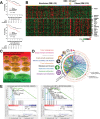

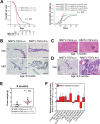
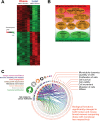
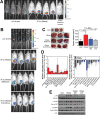

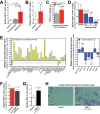
Similar articles
-
Dual inhibition of PI3K and mTOR mitigates compensatory AKT activation and improves tamoxifen response in breast cancer.Mol Cancer Res. 2013 Oct;11(10):1269-78. doi: 10.1158/1541-7786.MCR-13-0212. Epub 2013 Jun 27. Mol Cancer Res. 2013. PMID: 23814023
-
Efficacy and safety of the combination of metformin, everolimus and exemestane in overweight and obese postmenopausal patients with metastatic, hormone receptor-positive, HER2-negative breast cancer: a phase II study.Invest New Drugs. 2019 Apr;37(2):345-351. doi: 10.1007/s10637-018-0700-z. Epub 2019 Jan 5. Invest New Drugs. 2019. PMID: 30610588 Clinical Trial.
-
The enhancing effects of obesity on mammary tumor growth and Akt/mTOR pathway activation persist after weight loss and are reversed by RAD001.Mol Carcinog. 2013 Jun;52(6):446-58. doi: 10.1002/mc.21878. Epub 2012 Jan 30. Mol Carcinog. 2013. PMID: 22290600
-
Targeting the PI3K/AKT/mTOR pathway in estrogen receptor-positive breast cancer.Cancer Treat Rev. 2014 Aug;40(7):862-71. doi: 10.1016/j.ctrv.2014.03.004. Epub 2014 Mar 26. Cancer Treat Rev. 2014. PMID: 24774538 Review.
-
Everolimus in the treatment of hormone receptor-positive breast cancer.Expert Opin Investig Drugs. 2012 Dec;21(12):1835-43. doi: 10.1517/13543784.2012.726218. Epub 2012 Sep 20. Expert Opin Investig Drugs. 2012. PMID: 22994502 Review.
Cited by
-
Healthy Weight Loss for the Cancer Survivor.J Adv Pract Oncol. 2014 Jul-Aug;5(4):297-300. J Adv Pract Oncol. 2014. PMID: 26110075 Free PMC article. Review. No abstract available.
-
Obesity and Breast Cancer: A Case of Inflamed Adipose Tissue.Cancers (Basel). 2020 Jun 25;12(6):1686. doi: 10.3390/cancers12061686. Cancers (Basel). 2020. PMID: 32630445 Free PMC article. Review.
-
Obesity promotes resistance to anti-VEGF therapy in breast cancer by up-regulating IL-6 and potentially FGF-2.Sci Transl Med. 2018 Mar 14;10(432):eaag0945. doi: 10.1126/scitranslmed.aag0945. Sci Transl Med. 2018. PMID: 29540614 Free PMC article.
-
Everolimus exhibits anti-tumorigenic activity in obesity-induced ovarian cancer.Oncotarget. 2016 Apr 12;7(15):20338-56. doi: 10.18632/oncotarget.7934. Oncotarget. 2016. PMID: 26959121 Free PMC article.
-
Pan-cancer analysis of SLC2A family genes as prognostic biomarkers and therapeutic targets.Heliyon. 2024 Apr 13;10(8):e29655. doi: 10.1016/j.heliyon.2024.e29655. eCollection 2024 Apr 30. Heliyon. 2024. PMID: 38655365 Free PMC article.
References
-
- Renehan AG, Tyson M, Egger M, et al. Body-mass index and incidence of cancer: a systematic review and meta-analysis of prospective observational studies. Lancet. 2008;371(9612):569–578 - PubMed
-
- Petrelli JM, Calle EE, Rodriguez C, et al. Body mass index, height, and postmenopausal breast cancer mortality in a prospective cohort of US women. Cancer Causes Control. 2002;13(4):325–332 - PubMed
-
- Carmichael AR. Obesity as a risk factor for development and poor prognosis of breast cancer. BJOG. 2006;113(10):1160–1166 - PubMed
-
- Renehan AG, Soerjomataram I, Tyson M, et al. Incident cancer burden attributable to excess body mass index in 30 European countries. Int J Cancer. 2010;126(3):692–702 - PubMed
Publication types
MeSH terms
Substances
Grants and funding
LinkOut - more resources
Full Text Sources
Other Literature Sources
Medical
Molecular Biology Databases
Research Materials
Miscellaneous

